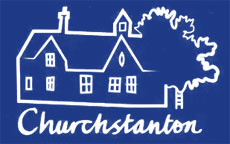Numeracy Curriculum – Year Five
Number & Place Value
- read, write, order and compare numbers to at least 1,000,000 and determine the value of each digit
- count forwards or backwards in steps of powers of 10 for any given number up to 1,000,000
- interpret negative numbers in context, count forwards and backwards with positive and negative whole numbers, including through 0
- round any number up to 1,000,000 to the nearest 10, 100, 1,000, 10,000 and 100,000
- solve number problems and practical problems that involve all of the above
- read Roman numerals up to 1,000 (M) and recognise years written in Roman numerals
Addition & Subtraction
- add and subtract whole numbers with more than 4 digits, including using formal written methods (columnar addition and subtraction)
- add and subtract numbers mentally with increasingly large numbers
- use rounding to check answers to calculations and determine, in the context of a problem, levels of accuracy
- solve addition and subtraction multi-step problems in contexts, deciding which operations and methods to use and why
Multiplication & Division
- identify multiples and factors, including finding all factor pairs of a number, and common factors of two numbers
- know and use the vocabulary of prime numbers, prime factors and composite (non-prime) numbers
- establish whether a number up to 100 is prime and recall prime numbers up to 19
- multiply numbers up to 4 digits by a one- or two-digit number using a formal written method, including long multiplication for two-digit numbers
- multiply and divide numbers mentally drawing upon known facts
- divide numbers up to 4 digits by a one-digit number using the formal written method of short division and interpret remainders appropriately for the context
- multiply and divide whole numbers and those involving decimals by 10, 100 and 1,000
- recognise and use square numbers and cube numbers, and the notation for squared (2) and cubed (3)
- solve problems involving multiplication and division, including using their knowledge of factors and multiples, squares and cubes
- solve problems involving addition, subtraction, multiplication and division and a combination of these, including understanding the meaning of the equals sign
- solve problems involving multiplication and division, including scaling by simple fractions and problems involving simple rates
Fractions (decimals & percentages)
- compare and order fractions whose denominators are all multiples of the same number
- identify, name and write equivalent fractions of a given fraction, represented visually, including tenths and hundredths
- recognise mixed numbers and improper fractions and convert from one form to the other and write mathematical statements > 1 as a mixed number
- add and subtract fractions with the same denominator and denominators that are multiples of the same number
- multiply proper fractions and mixed numbers by whole numbers, supported by materials and diagrams
- read and write decimal numbers as fractions
- recognise and use thousandths and relate them to tenths, hundredths and decimal equivalents
- round decimals with 2 decimal places to the nearest whole number and to 1 decimal place
- read, write, order and compare numbers with up to 3 decimal places
- solve problems involving numbers up to 3 decimal places
- recognise the per cent symbol (%) and understand that per cent relates to ‘number of parts per 100’, and write percentages as a fraction with denominator 100, and as a decimal fraction
- solve problems which require knowing percentage and decimal equivalents of 1/2, 1/4, 1/5, 2/5, 4/5 and fractions with a denominator of a multiple of 10 or 25
Measurement
- convert between different units of metric measure
- understand and use approximate equivalences between metric units and common imperial units such as inches, pounds and pints
- measure and calculate the perimeter or composite rectilinear shapes in centimetres and metres
- calculate and compare the area of rectangles (including squares) including using standard units, square centimetres (cm2) and square metres (m2) and estimate the area of irregular shapes
- estimate volume and capacity
- solve problems involving converting between units of time
- use all four operations to solve problems involving measure using decimal notation including scaling
Properties of Shape
- identify 3-D shapes, including cubes and other cuboids, from 2-D representations
- know angles are measured in degrees: estimate and compare acute, obtuse and reflex angles
- draw given angles, and measure them in degrees (o)
- identify:
– angles at a point and 1 whole turn (total 360o)
– angles at a point on a straight line and half a turn (total 180o)
– other multiples of 90o - use the properties of rectangles to deduce related facts and find missing lengths and angles
- distinguish between regular and irregular polygons based on reasoning about equal sides and angles
Position & Direction
- identify, describe and represent the position of a shape following a reflection or translation, using the appropriate language, and know that the shape has not changed
Statistics
- solve comparison, sum and different problems using information presented in a line graph
- complete, read and interpret information in tables, including timetables

